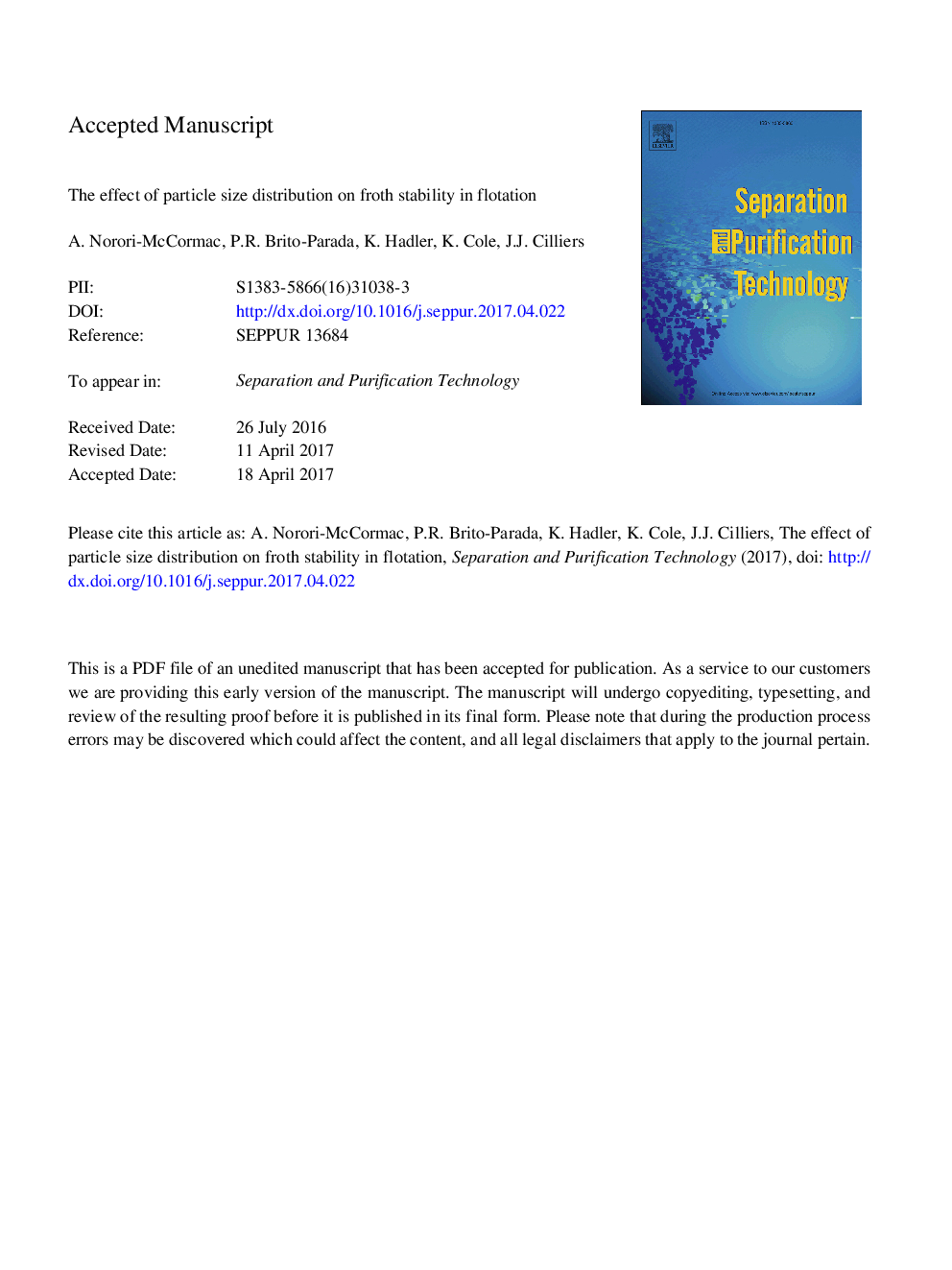| Article ID | Journal | Published Year | Pages | File Type |
|---|---|---|---|---|
| 4989753 | Separation and Purification Technology | 2017 | 22 Pages |
Abstract
In this work, the effects of particle size distribution on air recovery are studied in a single species (silica) system using a continuous steady-state laboratory flotation cell. This allows an investigation into the effects of particle size distribution only on froth stability, using solids content and solids recovery as indicators of flotation performance. It is shown that, as the cell air rate is increased, the air recovery of the silica system passes through a peak, exhibiting the same froth behaviour as measured industrially. The air recovery profiles of systems with three different particle size distributions (d80 of 89.6, 103.5 and 157.1 μm) are compared. The results show that, at lower air rates, the intermediate particle size distribution (103.5 μm) yields the most stable froth, while at higher air rates, the finest particles (89.6 μm) result in higher air recoveries. This is subsequently linked to changes in flotation performance. The results presented here highlight, for the first time, the link between particle size distribution in flotation feeds, air recovery and flotation performance. The results demonstrate that there is an optimal air rate for each particle size distribution, therefore changes in particle size distribution in the feed to flotation cells require a change in air rate in order to maximise mineral recovery.
Related Topics
Physical Sciences and Engineering
Chemical Engineering
Filtration and Separation
Authors
A. Norori-McCormac, P.R. Brito-Parada, K. Hadler, K. Cole, J.J. Cilliers,
